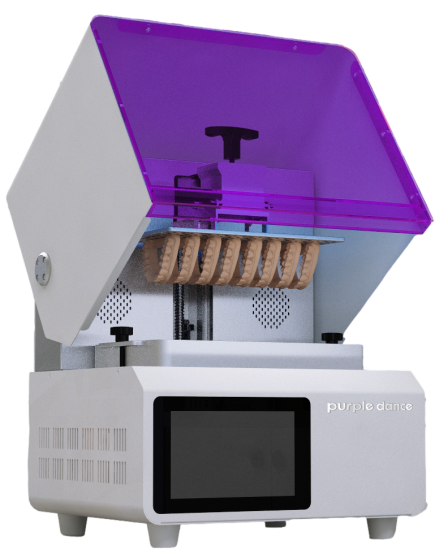When comparing dental 3D printers that use LCD, DLP, and SLA (Stereolithography) technologies, it's important to consider several key factors to make an informed decision. These technologies are all resin-based and have their own sets of advantages and disadvantages. Here's a comparison:
1. Printing Technology:
-
LCD (Liquid Crystal Display):
- LCD 3D printers use an LCD screen to mask light and cure the resin layer by layer. They are known for their affordability and reliability.
- They offer good detail and accuracy but might have slightly slower printing speeds compared to DLP.
-
DLP (Digital Light Processing):
- DLP printers use a digital light projector to cure the entire layer of resin at once, which typically results in faster print times.
- They often have high-resolution capabilities and can produce detailed dental models with precision.
-
SLA (Stereolithography):
- SLA printers use a laser to cure the resin, offering very high precision and detail. They are known for their exceptional surface finish.
- SLA printers are often more expensive than LCD and DLP counterparts.
2. Print Resolution:
- All three technologies can achieve high-resolution prints. The actual resolution might vary by model and manufacturer, so it's essential to check the specifications for the specific printer you're interested in.
3. Material Compatibility:
- Dental applications may require specific biocompatible and FDA-approved resins. Ensure that the chosen printer is compatible with the materials needed for dental applications.
4. Build Volume:
- The size of the build platform can impact the types and quantities of dental models you can produce. Compare the build volumes of different printers to meet your specific requirements.
5. Speed:
- DLP and LCD printers are typically faster due to their ability to cure entire layers at once, SLA printers in terms of speed. However, speed can also depend on the specific model and settings used.
6. Post-Processing:
- Post-processing steps, such as support removal and resin curing, are similar for LCD, DLP, and SLA printers. However, the specific process may vary, so consider the post-processing requirements of the chosen printer.
7. Cost:
- LCD printers are often the most affordable, followed by SLA, with DLP being relatively more expensive. However, the cost can vary significantly depending on the specific model and features.
8. Support and Training:
- Consider the level of customer support, warranties, and training resources provided by the manufacturer to assist with setup and maintenance.
Ultimately, the choice between LCD, DLP, and SLA technology depends on your specific dental 3D printing needs, budget, and preferences. Each technology has its strengths, and the right choice will depend on your practice's requirements and available resources. It's important to research specific models from different manufacturers to find the one that best suits your needs.

